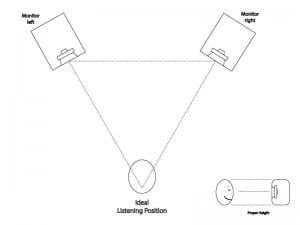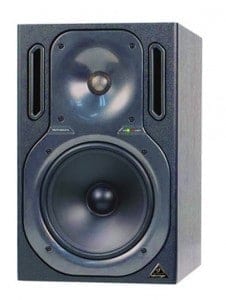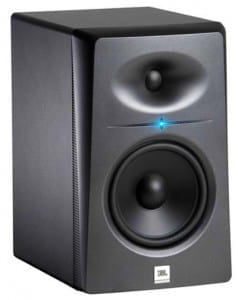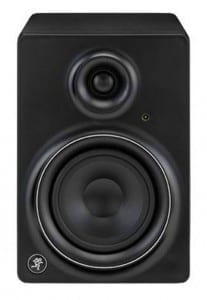Best Monitors for Mixing
Achieving a professional, high quality mix can be attributed to a list of factors that seems to be endless. A primary part of the process is finding the best monitors for mixing, which is often an area of much debate. Everyone has there own opinion of which monitors sound the best and why you should spend more or less money, but what it all boils down to is what sounds best to each individual. This article will break down the basics of monitors and provide some suggestions as to what monitors may work best for you and your studio environment.

Sage Audio's Mixing Monitors
Powered vs. Unpowered
Monitors are split into 2 basic categories, powered (active) and unpowered (passive), each having their own advantages as well as disadvantages. Powered monitors can often save a lot of time and stress if you are unfamiliar with amplifiers, cabling, connectors, etc. With active monitors, you simply hook them up to your mixer or DAW, and you're basically ready to roll. Passive monitors could be a better option if you already have an amplifier and want to really tweak the sound they produce. Keep in mind that different amplifiers will sound differently through the same monitors, which could be a positive or negative trait. Maintaining the proper temperature of the amplifier will also affect its performance. Ensuring that there is a few inches of space around the vents and fans which will allow the amp to properly cool and avoid damaging the monitors. It is important to use the proper gauge of cables that are recommended in the manual to and from your amp and monitors to achieve the best possible sound. In most cases, it is necessary to use an amp that can provide twice the amount of wattage that the monitors actually recommend. Depending on the amount of effort you want to put into hooking up your monitors, active and passive monitors are both worthy of providing the best sound to reference your mix with.
Monitor Placement
The placement of monitors can affect the stereo image and consistency of the sound while mixing. After hooking up your near field monitors, it is of the utmost importance to place them the correct distance from each other and the engineer. A good rule of thumb is to try and create and equilateral triangle with the speakers as two of the points and the listener as the third point. Try to find the spot in the middle of the furthest and closest position that you lean forward and back as you mix. The height of the monitors should be equal to the height of the listeners ears, specifically aligned with the tweeter. Keep the monitors in the vertical position, because when they are turned on their side the high and low frequencies will interfere with each other, and you will not be provided with a true representation of the mix.

Ideal positioning for studio monitors
Flat Frequency Range
Opinions vary on whether or not to mix with monitors that sound pleasing to the ear or those that have a flat sound. The monitors that are enjoyable to listen to music with often have boosts in the bass and high frequency ranges. This can negatively affect a mix due to the tendency to leave out high and low areas of a song resulting in a high mid-range, muddy mix. With a flat frequency range, the entire spectrum is easier to balance which will allow the mix to translate well through a majority of sources such as car stereos, computer speakers, iPods, home stereos, etc. Either way, it is important to find the set of monitors that work best for each individual. After a lot of time spent learning how a song sounds through your monitors and then through other sources, the engineer will be able to compensate for frequencies that are lacking or boosted, and make those necessary adjustments to create a consistent mix out of all sources.
Products
This list showcases a variety of monitors that are worth checking out and listening to. When shopping for monitors, it is a good idea to listen to a song that you know like that back of your hand through each product. This will allow you to really hear the differences and discrepancies between each monitor in order to find the set that creates a true, clear representation of the song.

Behringer Truth 2031a - $200

JBL LSR2325P- $200

KRK VXT6- $450

Mackie MR5MK II- $150

Yamaha HS50m- $200
Results from music mastering are improved immensely when a solid mix is created, and finding the right monitors is definitely a step in the right direction. Ultimately, each individual has their own preference for what what monitor works best for them. The primary goal when finding the best monitors for mixing, is to find the ones that allow you to create mixes that can be played consistently through any medium. So whether you choose monitors that are powered or unpowered, flat or enhanced frequency response, cheap or expensive; finding the pair that's right for you is all that matters.




